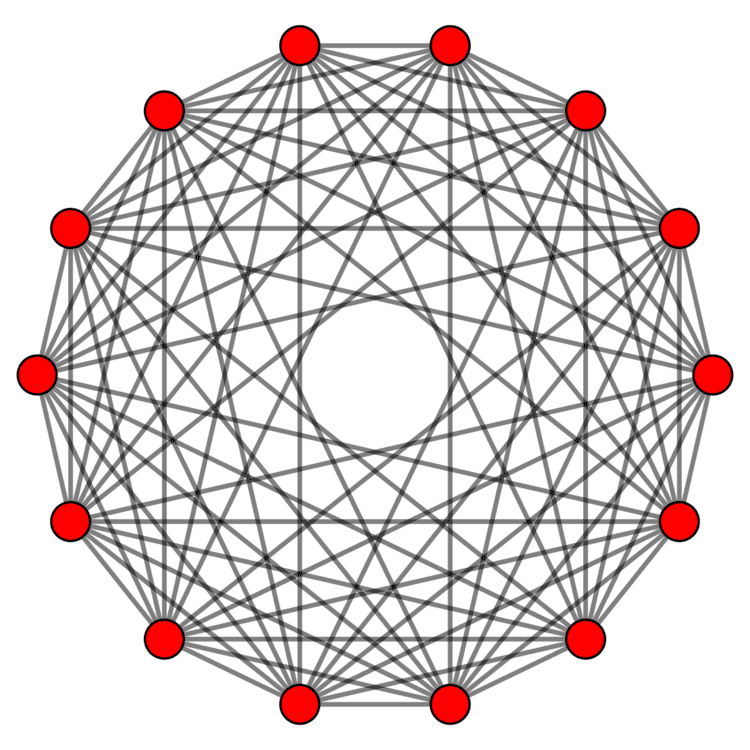 | ||
In seven-dimensional geometry, a rectified 7-orthoplex is a convex uniform 7-polytope, being a rectification of the regular 7-orthoplex.
Contents
- Rectified 7 orthoplex
- Alternate names
- Construction
- Cartesian coordinates
- Root vectors
- Trirectified 7 orthoplex
- References
There are unique 7 degrees of rectifications, the zeroth being the 7-orthoplex, and the 6th and last being the 7-cube. Vertices of the rectified 7-orthoplex are located at the edge-centers of the 7-orthoplex. Vertices of the birectified 7-orthoplex are located in the triangular face centers of the 7-orthoplex. Vertices of the trirectified 7-orthoplex are located in the tetrahedral cell centers of the 7-orthoplex.
Rectified 7-orthoplex
The rectified 7-orthoplex is the vertex figure for the demihepteractic honeycomb. The rectified 7-orthoplex's 84 vertices represent the kissing number of a sphere-packing constructed from this honeycomb.
orAlternate names
Construction
There are two Coxeter groups associated with the rectified heptacross, one with the C7 or [4,3,3,3,3,3] Coxeter group, and a lower symmetry with two copies of pentacross facets, alternating, with the D7 or [34,1,1] Coxeter group.
Cartesian coordinates
Cartesian coordinates for the vertices of a rectified heptacross, centered at the origin, edge length
Root vectors
Its 84 vertices represent the root vectors of the simple Lie group D7. The vertices can be seen in 3 hyperplanes, with the 21 vertices rectified 6-simplexs cells on opposite sides, and 42 vertices of an expanded 6-simplex passing through the center. When combined with the 14 vertices of the 7-orthoplex, these vertices represent the 98 root vectors of the B7 and C7 simple Lie groups.
Alternate names
Cartesian coordinates
Cartesian coordinates for the vertices of a birectified 7-orthoplex, centered at the origin, edge length
Trirectified 7-orthoplex
A trirectified 7-orthoplex is the same as a trirectified 7-cube.
